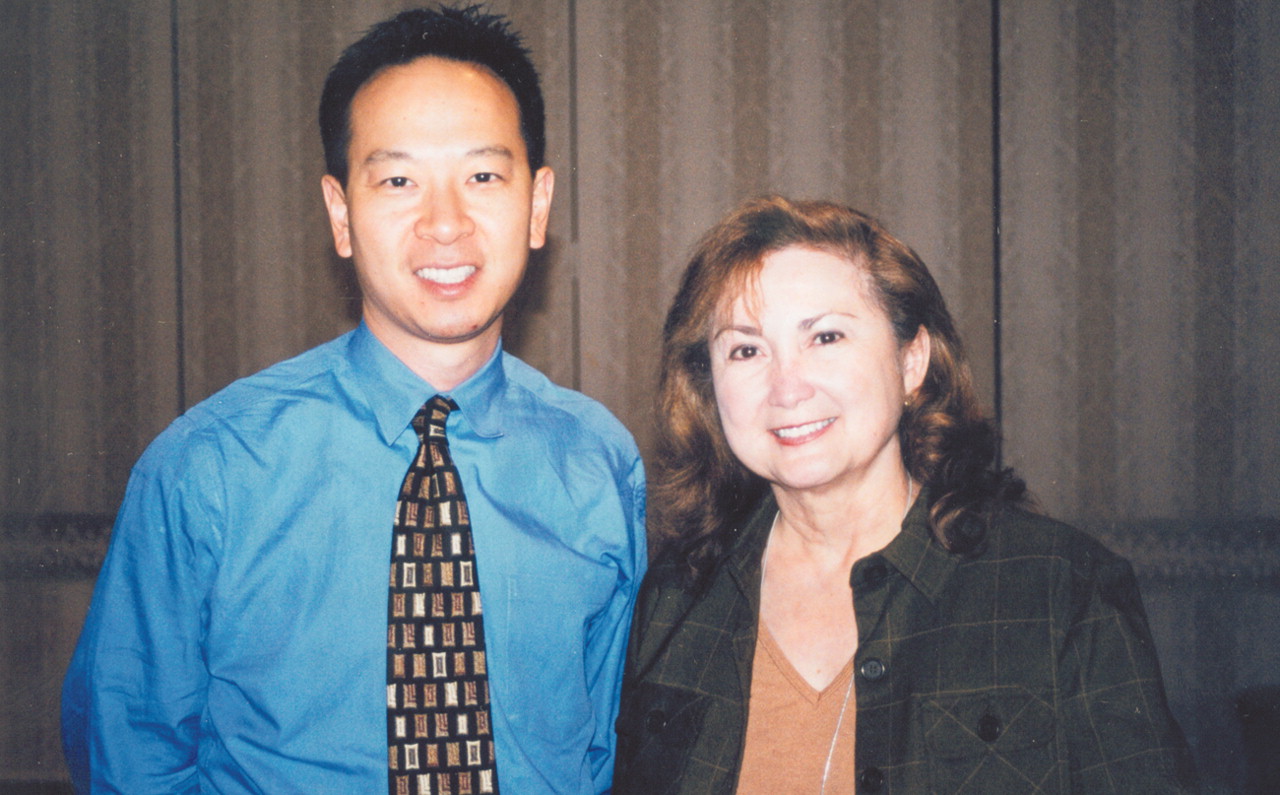Cultural Awareness Critical To Post-Disaster Care
When disaster strikes, the ways in which people grieve and work toward recovery may be influenced by their cultural backgrounds, according to experts in disaster mental health who spoke at APA’s 2003 Institute on Psychiatric Services in October in Boston.
Just weeks after thousands perished in the terrorist attacks on the World Trade Center buildings and New York City residents were sickened by anthrax spores, New Yorkers were hit with another disaster—the crash of Flight 587.
The flight took off on the morning of November 12, 2001, from John F. Kennedy International Airport bound for Santo Domingo in the Dominican Republic. Minutes later, it crashed into a Queens neighborhood, killing all 260 people on board and five on the ground (Psychiatric News, December 7, 2001).
Mass Chaos Ensued

Anthony Ng, M.D., chair of APA’s Committee on the Psychiatric Dimensions of Disasters, and Patricia Mendoza Bonewitz, Ph.D., a disaster mental health consultant, shared insights at APA’s 2003 Institute on Psychiatric Services in Boston on how to help minority populations cope after disaster strikes.
Less than an hour after the crash, he arrived at the place where family members of the victims were told to congregate—the Ramada Plaza Hotel, which is close to the airport.
Hundreds of family members who had just bade their loved ones farewell at the airport converged on the Ramada, Ng said, before the family assistance center could be fully staffed and organized.
In a scene he described as “chaos,” hotel guests watched as an influx of anguished family members poured through the hotel’s entryway, surrounded by members of the media.
Many of the family members spoke only Spanish, Ng said, yet there were few translators on hand.
“The wailing and screaming of some were tremendous and quickly affected other family members,” he said, especially when the passenger list was read aloud.
Paramedics and mental health professionals on the scene were overwhelmed “by the extraordinary nature of this grief,” Ng added, and physicians dispensed anxiolytic medications to some family members to reduce their acute level of distress. Ideally, he said, the family assistance center should have been set up so that each family would have a private space in which to grieve.
Spirituality Important
After a memorial service a week later, family members were bused to the crash site. “You could still smell the jet fuel and see a crater in the ground,” Ng recalled.
Many family members were distraught, and although psychiatrists and mental health professionals were available to offer support, Ng said it is best for a spiritual leader such as a priest to approach grieving family members first.
“Then, if this distress persists,” Ng said, “we provide them with mental health care.”
A few days after the crash, the family assistance center was moved to midtown Manhattan. As family members drifted in and out, Ng observed that Latinos who had lost loved ones on Flight 587 “relied on spiritual counseling first; mental health counseling came second.”
Because spirituality is important to so many Dominicans, Ng and his colleagues worked closely with spiritual leaders to help the family members better cope with and eventually recover from the tragedy. “This is a resilient group,” he said.
Cultural Liaisons Build Trust
Just hours after 12 jurors in Sylmar, Calif., read their verdicts on April 29, 1992, clearing four white police officers of the beating of black motorist Rodney King, Los Angeles and surrounding areas erupted in three days of violence.
The toll from the riots was devastating: more than 50 people were killed, more than 4,000 people were injured, 12,000 people were arrested, and fires and looting resulted in property damage of a billion dollars.
Psychologist and disaster mental health consultant Patricia Mendoza Bonewitz, Ph.D., worked with the Los Angeles County Department of Mental Health to provide mental health services to Los Angeles residents during and after the riots.
South-Central Los Angeles, where much of the rioting took place, had the feel of a war zone, she said. For the most part, the residents in this part of Los Angeles are low-income African Americans and Latinos who could not afford to replace damaged or stolen property.
“The level of personal loss was huge,” she said.
“Among some Latinos and African Americans, there is a distrust of government-run services,” said Mendoza Bonewitz. To earn the trust of residents in need of help, she spent extra time establishing rapport with them.
“Revealing something of yourself may break down barriers and help people talk to you more comfortably,” she told attendees.
To reach as many people as possible, Mendoza Bonewitz found it helpful to “find sites in the community where people were most comfortable and provide mental health and disaster relief services there.”
She found herself meeting with and counseling residents in beauty shops, malls, and churches, she said.
Forming a liaison with a “cultural broker” who already has the trust of a multicultural community is also helpful, she added. In this case, Mendoza Bonewitz and her colleagues worked closely with the pastor of the AME church in South-Central Los Angeles. “Many of our disaster-related services were held at this church,” she added.
In Long Beach, an hour south of Los Angeles, a Buddhist priest and a Samoan tribal chief worked with disaster-recovery officials to reach residents who had been affected by rioting there, Mendoza Bonewitz said.
She advised attendees wishing to get involved in disaster recovery to work with community agencies. “The work we do as psychiatrists, psychologists, and mental health workers is time limited, but the natural support networks in the community are already providing services to these people.” Outside assistance should focus on strengthening those services, she said. ▪



